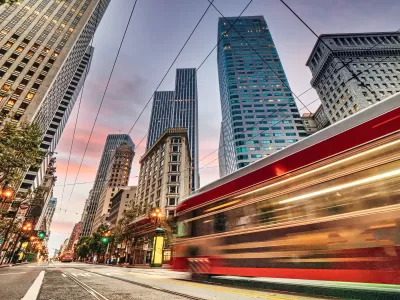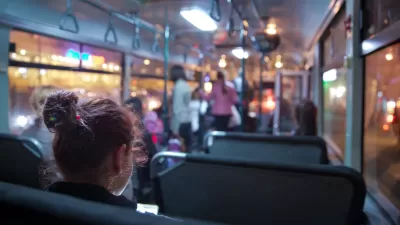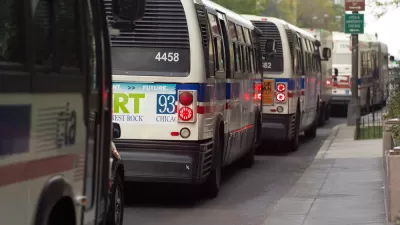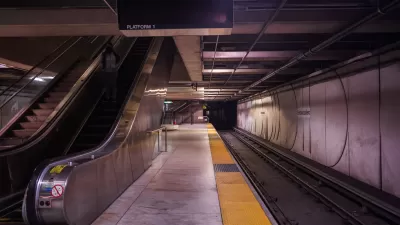With many of California’s low-income workers dependent on public transit to get to work and run daily errands, the San Francisco Chronicle Editorial Board calls on the state’s governor to support faltering transit systems.

Will California Governor Gavin Newsom let the state’s transit systems fail? The San Francisco Chronicle’s editorial board argues that he shouldn’t. “Without money to keep public transit from going kaput, and with fewer grants available to buy electric vehicles, how will lower-income Californians get to work or the doctor’s office?”
Without state intervention, in the Bay Area alone, “The San Francisco Municipal Transportation Agency estimates that it will have to slash one line per month for 20 months starting this summer if state funds don’t come in. BART, meanwhile, is bracing for a worst-case financial scenario that could result in closing service on weekends, shuttering two of its five lines and nine of its 50 stations, and running trains as infrequently as once per hour.”
Meanwhile, the governor’s proposed budget steadfastly supports transit funding cuts. The editorial board argues that “Many other investments will be for naught if California’s public transit systems enter financial ruin.”
The board points out that transit agencies are working to develop better accountability systems as they seek additional funding. “On Thursday, the California Transit Association released a proposed accountability framework that would require agencies receiving state funds to submit detailed plans to recover ridership and address operating deficits. Agencies would also have to submit progress reports every two years outlining how they spent the money.”
FULL STORY: Gavin Newsom can’t just let California public transit collapse

Planetizen Federal Action Tracker
A weekly monitor of how Trump’s orders and actions are impacting planners and planning in America.

Maui's Vacation Rental Debate Turns Ugly
Verbal attacks, misinformation campaigns and fistfights plague a high-stakes debate to convert thousands of vacation rentals into long-term housing.

San Francisco Suspends Traffic Calming Amidst Record Deaths
Citing “a challenging fiscal landscape,” the city will cease the program on the heels of 42 traffic deaths, including 24 pedestrians.

Amtrak Rolls Out New Orleans to Alabama “Mardi Gras” Train
The new service will operate morning and evening departures between Mobile and New Orleans.

The Subversive Car-Free Guide to Trump's Great American Road Trip
Car-free ways to access Chicagoland’s best tourist attractions.

San Antonio and Austin are Fusing Into one Massive Megaregion
The region spanning the two central Texas cities is growing fast, posing challenges for local infrastructure and water supplies.
Urban Design for Planners 1: Software Tools
This six-course series explores essential urban design concepts using open source software and equips planners with the tools they need to participate fully in the urban design process.
Planning for Universal Design
Learn the tools for implementing Universal Design in planning regulations.
Heyer Gruel & Associates PA
JM Goldson LLC
Custer County Colorado
City of Camden Redevelopment Agency
City of Astoria
Transportation Research & Education Center (TREC) at Portland State University
Jefferson Parish Government
Camden Redevelopment Agency
City of Claremont





























